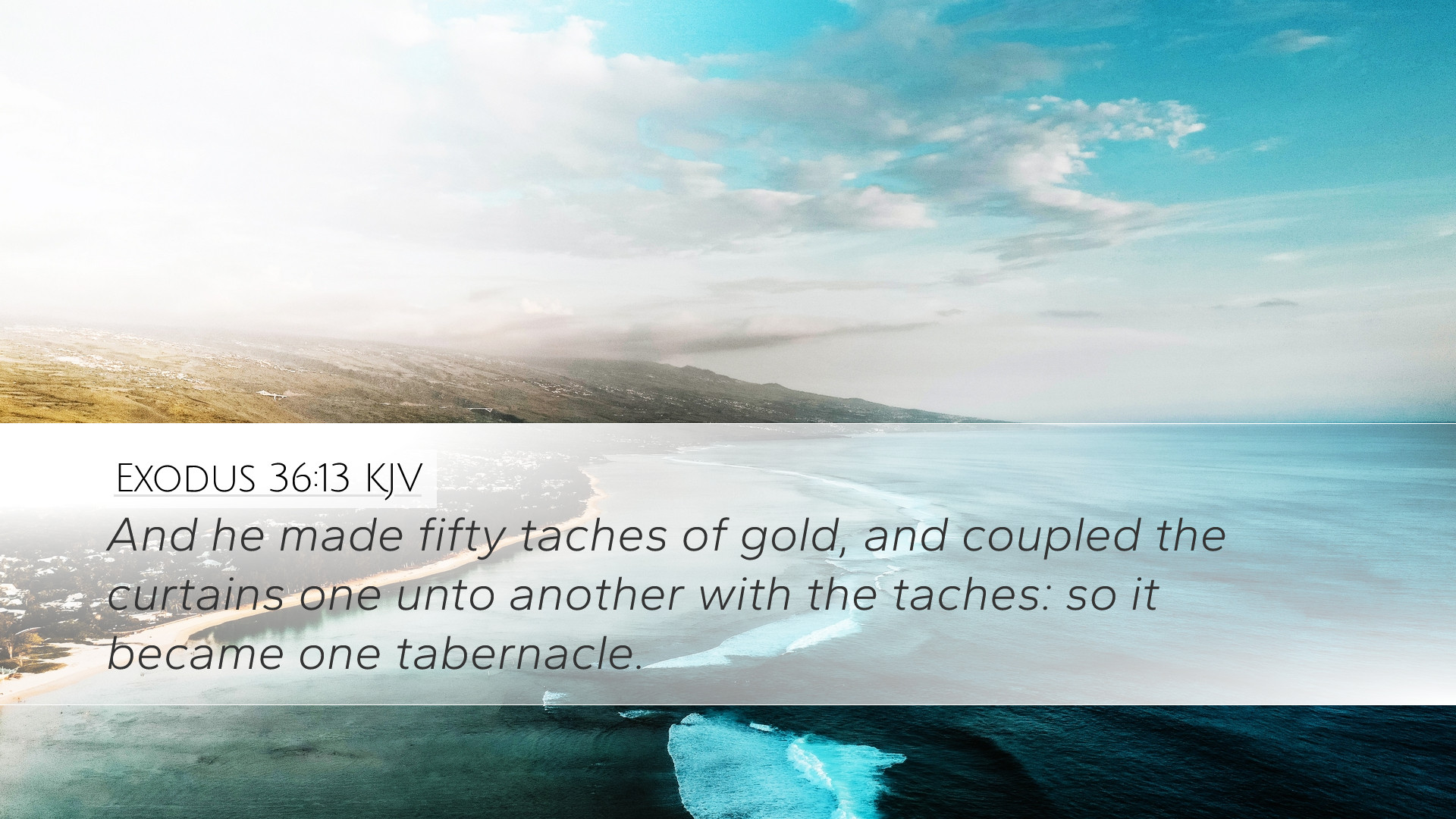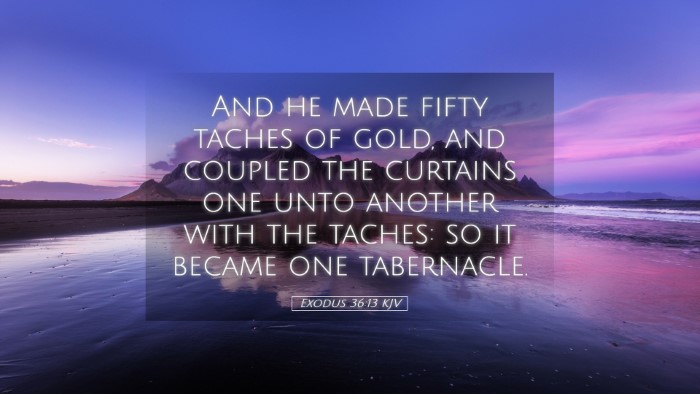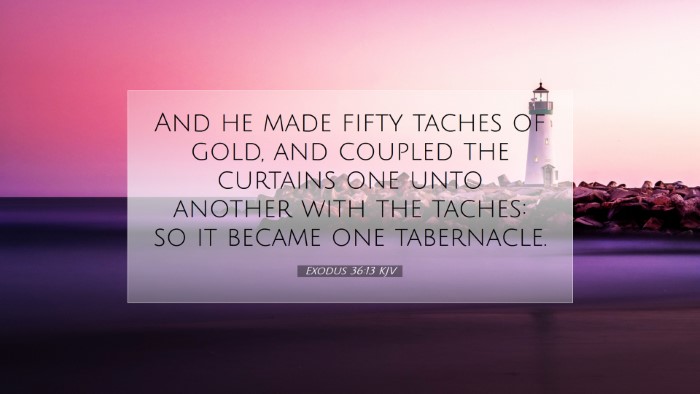Exodus 36:13 Commentary
Verse: "And he made two cherubims of gold, beaten out of one piece made he them, on the two ends of the mercy seat."
Introduction
Exodus 36:13 is a pivotal verse in the description of the construction of the tabernacle, particularly the mercy seat and the cherubim that adorned it. This verse reveals crucial theological and artistic elements that resonate deeply with the themes of God's presence, holiness, and mercy as interpreted in various public domain commentaries. Below, we will explore insights from respected commentators such as Matthew Henry, Albert Barnes, and Adam Clarke, enriching our understanding of this scripture.
Theological Significance of the Cherubim
The Cherubim's Symbolism: Cherubim hold significant meaning in biblical theology, often associated with the presence of God. Matthew Henry notes that cherubim are celestial beings that serve as guardians of the holiness of God. When placed on the mercy seat, they symbolize how God’s mercy is administered.
-
Guardian of Holiness: The cherubim represent God's divine guardianship. They ensure that the mercy seat occupies its rightful place in the sacred space of the tabernacle, reinforcing the notion that God’s mercy is accessed only in the context of His holiness.
-
Divine Presence: Albert Barnes emphasizes that the cherubim imply God's presence among His people. They are not merely decorative; they symbolize God's willing accommodation of humanity's needs for mercy through sacrificial atonement.
Artistic Construction and Unity
Beaten Gold: The detail that the cherubim were made from “one piece” of gold speaks to their unity and purpose. Adam Clarke expounds on this craftsmanship, asserting that such meticulous construction aligns with God's character of perfection and order. Every aspect of the tabernacle reflects divine intentionality.
This artistic choice also underscores a critical lesson: the unity in the body of Christ (the church). Just as the cherubim are crafted from a single entity, believers are united in purpose and mission as members of Christ's body. This imagery helps contextualize the church's identity amidst diversity.
Spiritual Implications for Worship
The construction of the mercy seat and its cherubim invites reflection on how worship should be approached. Matthew Henry suggests that understanding the mercy seat—adorned by cherubim—redefines worship as an encounter with the holy God who grants mercy, reminding worshippers of their dependence on divine grace.
-
Approaching with Reverence: Worship must be characterized by reverence, considering the divine presence symbolized through the cherubim. The holiness of God invokes awe, compelling worshippers to acknowledge their need for mercy.
-
Thanksgiving for Mercy: The mercy seat signifies God's gracious provision. Brewster La Porte emphasizes that the worship experience ought to include gratitude for the continuous grace provided through Christ, who fulfills the role once represented in the mercy seat.
Christological Interpretation
Foreshadowing Christ: The imagery of the mercy seat, accompanied by the cherubim, serves as a beautiful foreshadowing of Jesus Christ. Adam Clarke argues that this is a type of Christ, who became our propitiation for sin. The mercy seat represents the place where God’s justice and mercy meet—an intimate picture of the cross.
This Christological thread within the tabernacle emphasizes that Jesus stands as the ultimate mediator between God and humanity, making the sacrifices necessary for atoning grace available. In theological discourse, Christ is often viewed as the fulfillment of the sacrificial system represented in the Old Testament, culminating in His sacrificial death and resurrection.
Conclusion and Call to Action
Exodus 36:13 holds robust theological insights that deepen our understanding of worship, divine presence, and God's mercy. As pastors and theologians study this passage, it serves as a reminder of the solemnity involved in approaching God's presence—a space where mercy exceeds judgment through Christ. The cherubim's presence, crafted as one piece, emphasizes the need for unity in the body of Christ as we gather in worship, encouraging believers to live as a reflection of God's holiness and grace.
Incorporating these insights into preaching and teaching can help congregations grow in their appreciation of the sacredness of worship and the immense love expressed through Christ's sacrificial atonement. As we reflect on the mercy seat and its significance, may our hearts be stirred to approach God with reverence and thanksgiving, confidently laying our needs at His feet.


